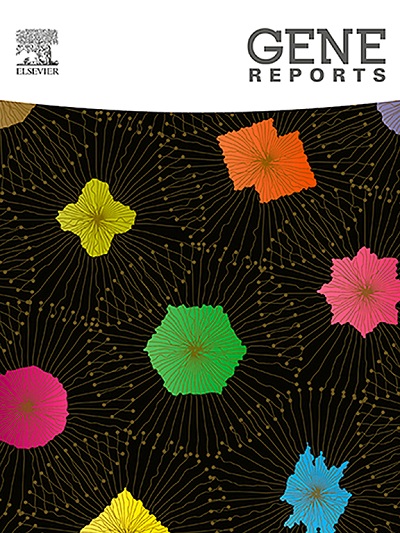Genetic investigations of SEPTIN12 gene in infertile men with acephalic sperm syndrome
IF 1
Q4 GENETICS & HEREDITY
引用次数: 0
Abstract
Acephalic sperm syndrome represents a rare form of teratozoospermia with significant implications for male fertility. It is characterized by sperm displaying headless flagella, heads lacking flagella, or abnormal head-to-flagella connections, all resulting from genetic factors. Among the genes implicated in this syndrome is SEPTIN12, crucial for the final differentiation of male germ cells, particularly expressed in the head, neck, and sperm annulus post-meiosis. In the present study, genetic variations within exons 5, 6, and 7 of the SEPTIN12 gene in patients with acephalic sperm syndrome were investigated, using DNA sequencing on 20 cases. Notably, a homozygous pathogenic single nucleotide variant, c.474G>A, in exon 5 of the SEPTIN12 gene was identified in an individual of Iranian descent affected by acephalic sperm syndrome. No variation was found in exons 6 and 7 of the SEPTIN12 gene in cases and controls. According to previous studies, this synonymous nucleotide change may lead to the production of a truncated protein, potentially contributing to the development of acephalic sperm syndrome.
求助全文
约1分钟内获得全文
求助全文
来源期刊

Gene Reports
Biochemistry, Genetics and Molecular Biology-Genetics
CiteScore
3.30
自引率
7.70%
发文量
246
审稿时长
49 days
期刊介绍:
Gene Reports publishes papers that focus on the regulation, expression, function and evolution of genes in all biological contexts, including all prokaryotic and eukaryotic organisms, as well as viruses. Gene Reports strives to be a very diverse journal and topics in all fields will be considered for publication. Although not limited to the following, some general topics include: DNA Organization, Replication & Evolution -Focus on genomic DNA (chromosomal organization, comparative genomics, DNA replication, DNA repair, mobile DNA, mitochondrial DNA, chloroplast DNA). Expression & Function - Focus on functional RNAs (microRNAs, tRNAs, rRNAs, mRNA splicing, alternative polyadenylation) Regulation - Focus on processes that mediate gene-read out (epigenetics, chromatin, histone code, transcription, translation, protein degradation). Cell Signaling - Focus on mechanisms that control information flow into the nucleus to control gene expression (kinase and phosphatase pathways controlled by extra-cellular ligands, Wnt, Notch, TGFbeta/BMPs, FGFs, IGFs etc.) Profiling of gene expression and genetic variation - Focus on high throughput approaches (e.g., DeepSeq, ChIP-Seq, Affymetrix microarrays, proteomics) that define gene regulatory circuitry, molecular pathways and protein/protein networks. Genetics - Focus on development in model organisms (e.g., mouse, frog, fruit fly, worm), human genetic variation, population genetics, as well as agricultural and veterinary genetics. Molecular Pathology & Regenerative Medicine - Focus on the deregulation of molecular processes in human diseases and mechanisms supporting regeneration of tissues through pluripotent or multipotent stem cells.
 求助内容:
求助内容: 应助结果提醒方式:
应助结果提醒方式:


